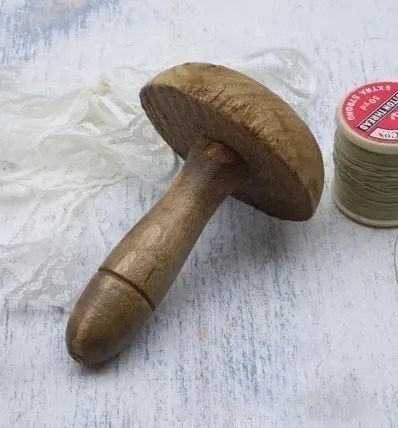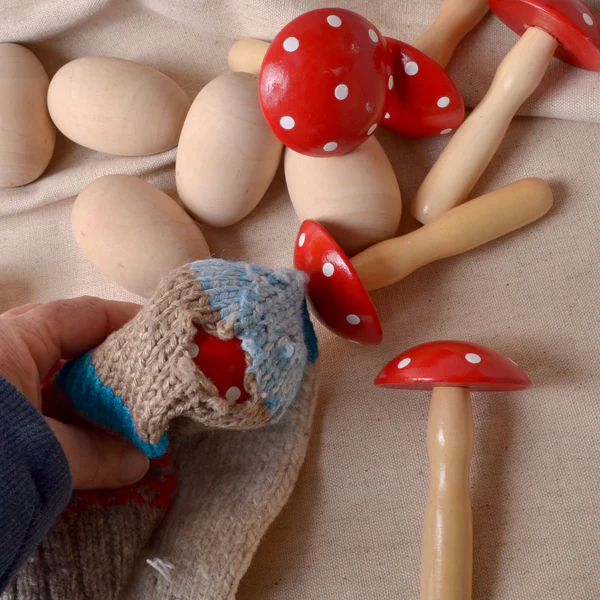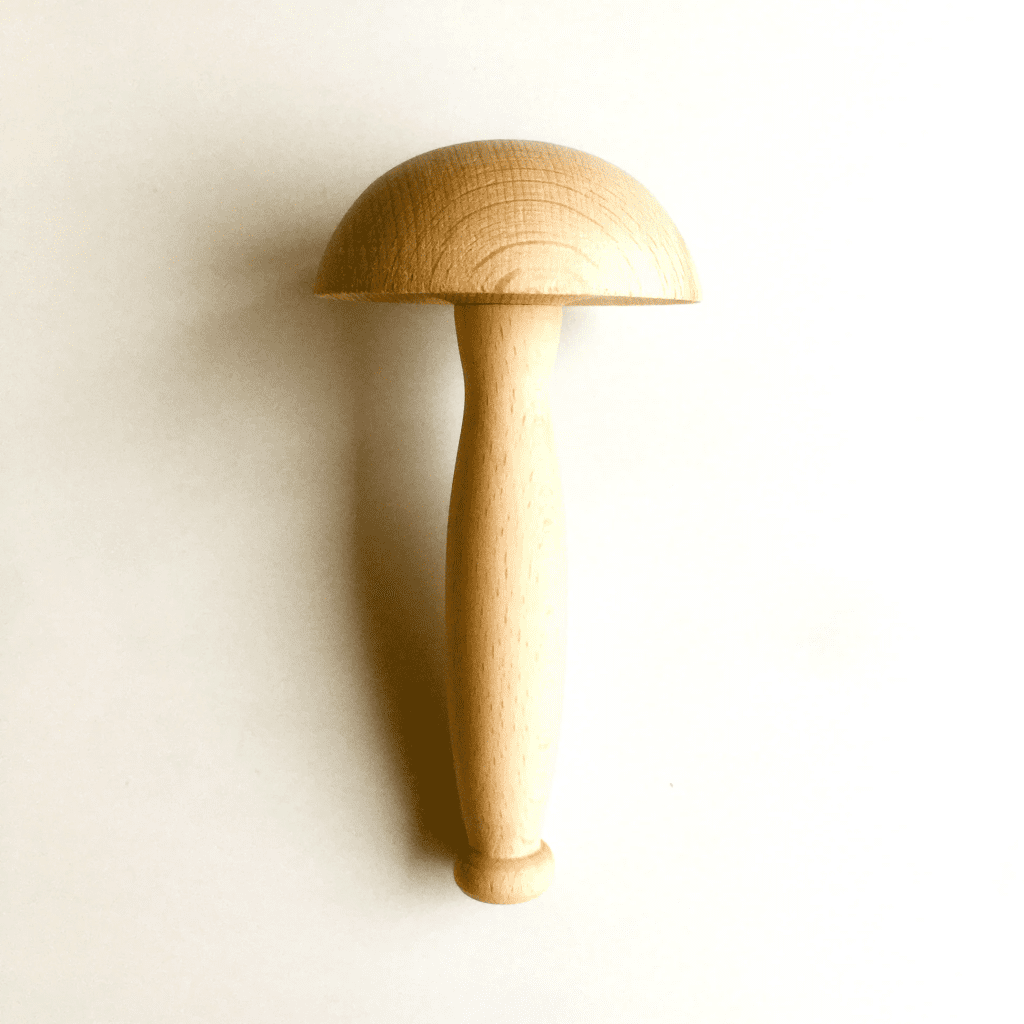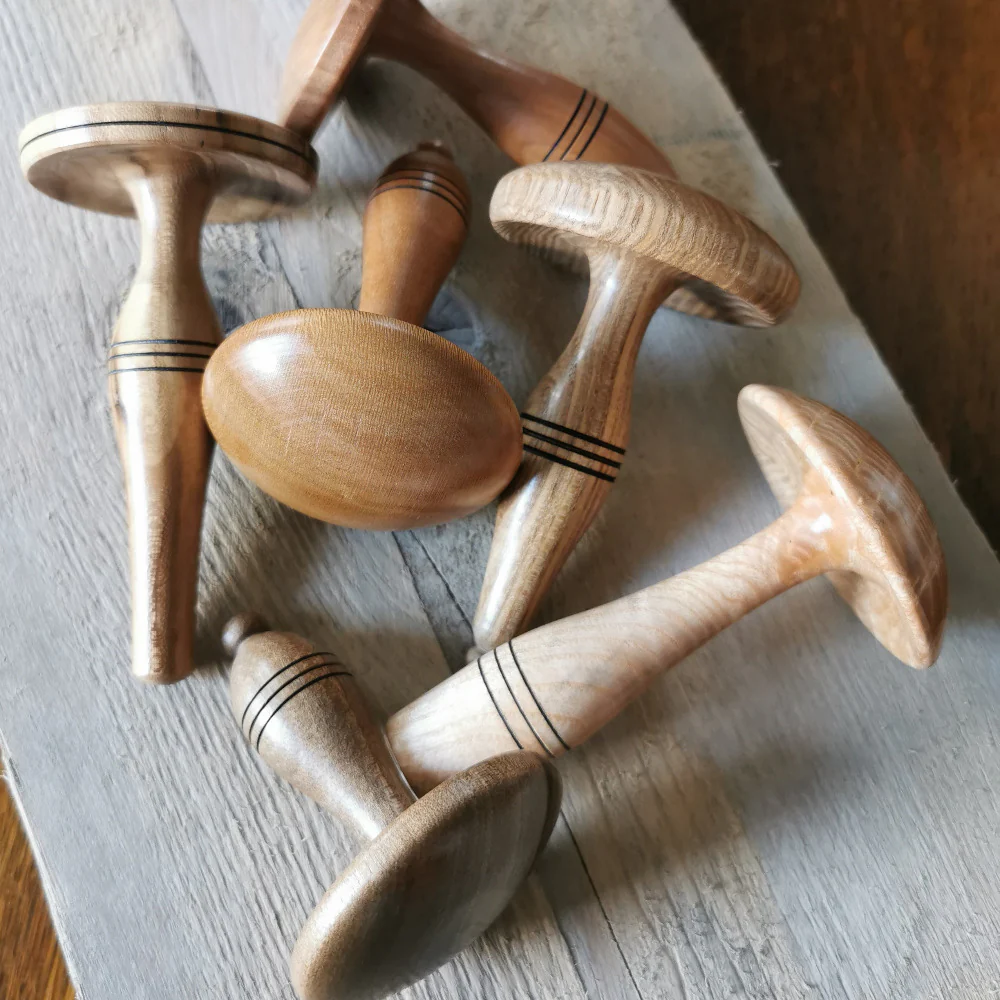In today’s world of fast fashion and mass production, many household tools from the past have faded into obscurity. One such item, once a must-have in every home, now leaves people puzzled when they come across it. If you’ve ever stumbled upon a strange, mushroom-shaped wooden object in your grandmother’s sewing kit and had no idea what it was—you’re not alone.
The mystery item? A darning mushroom!
This humble yet brilliantly simple tool was once an essential part of every household. But with the rise of disposable fashion, it has become a relic of the past. So, what exactly is a darning mushroom, and why was it once indispensable? Let’s dive into its fascinating history, purpose, and why it might just be making a comeback.

What Is a Darning Mushroom?
A darning mushroom is a small, rounded tool that looks exactly like a wooden mushroom. It consists of a smooth, dome-shaped top and a short handle, making it easy to hold. Traditionally made of wood or ceramic, it was designed to help people repair worn-out or torn fabrics—especially socks.
Before the days of cheap, throwaway clothing, repairing garments was a normal part of life. Instead of tossing out socks with holes in them, people would darn (or stitch over) the worn areas to extend their lifespan. The darning mushroom acted as a supporting surface, making it easier to stitch fabric without stretching or misshaping it.
Video: Darning and Mending Socks – Tips and Tricks While Chatting About Sustainability
How Was a Darning Mushroom Used?
Using a darning mushroom required patience and skill, but once mastered, it became a simple and effective way to repair clothes. Here’s how it worked:
1️⃣ Positioning the Fabric – The torn or thin fabric (usually a sock) was stretched over the rounded top of the mushroom. This provided a firm, curved surface that mimicked the natural shape of the foot.
2️⃣ Securing the Fabric – The excess fabric was often held in place with an elastic band or simply gripped tightly. This prevented the fabric from shifting during the darning process.
3️⃣ Stitching the Hole – Instead of using a typical sewing stitch, people used a woven technique, carefully threading across the hole in one direction and then weaving stitches in the opposite direction. This method reinforced the fabric without creating uncomfortable, raised seams.
The result? A strong, almost invisible repair that gave worn-out socks and clothes a second life.

Why Was the Darning Mushroom So Popular?
In the past, people didn’t toss out clothes as soon as they got a hole. Every household knew how to mend, repair, and extend the life of garments. The darning mushroom was an everyday tool because:
✔️ Clothing Was Expensive – Before mass production, clothes were hand-sewn or made with quality materials, making them valuable investments. Instead of replacing items, families repaired them.
✔️ Sustainability Was a Necessity – Today, we talk about sustainability as a choice, but back then, it was a way of life. Waste wasn’t an option, and every piece of fabric was cherished.
✔️ Socks Wore Out Fast – Before synthetic fibers, most socks were made from wool or cotton. These materials were warm and comfortable but prone to developing holes, making darning a regular chore.

Why Did the Darning Mushroom Disappear?
As clothing became cheaper and easier to replace, people stopped repairing their garments. The rise of fast fashion in the 20th century meant that buying new socks was more convenient than spending time darning them.
The darning mushroom, once a household staple, slowly faded into history, only found in antique stores or buried in old sewing kits. Many younger generations have never even heard of it!
Video: Darning Mushroom by Hemline
The Unexpected Revival of Darning
Surprisingly, the darning mushroom is making a comeback! In a world where people are becoming more aware of fast fashion waste and environmental impact, traditional skills like darning are regaining popularity.
Here’s why people are falling in love with darning again:
🌱 Sustainability Movement – As people embrace slow fashion, many are learning how to repair clothes instead of discarding them.
🧵 DIY and Handmade Culture – Sewing and mending have become trendy hobbies, with influencers showcasing creative visible mending techniques on social media.
💰 Cost Savings – With rising prices, repairing clothes instead of buying new ones is an easy way to save money.
👵 A Connection to the Past – Learning traditional skills creates a sense of nostalgia and self-sufficiency, bringing back the satisfaction of fixing things with your own hands.

How to Use a Darning Mushroom Today
If you’ve ever wanted to try hand-darning, it’s easier than you think! You can find modern darning mushrooms online, or you might even inherit one from an older family member. Here’s how to get started:
🔹 Gather Your Tools – You’ll need a darning mushroom, thread, a darning needle, and the fabric you want to repair.
🔹 Place the Fabric Over the Mushroom – Stretch it smoothly so there’s no puckering.
🔹 Stitch in One Direction – Use long, evenly spaced stitches across the hole, leaving small gaps between them.
🔹 Weave in the Opposite Direction – Go back and weave the needle over and under your first set of stitches, creating a woven patch.
🔹 Secure the Ends – Once the hole is fully covered, knot the thread securely and trim the excess.
Congratulations! You’ve just extended the life of your clothing and kept another item out of the landfill.

Final Thoughts: A Lost Art Worth Rediscovering
The darning mushroom may have disappeared from daily life, but its purpose is as relevant as ever. In a world where clothing waste is a growing problem, reviving simple skills like darning could be part of the solution.
So next time you see one of these mysterious wooden mushrooms at a flea market or in your grandma’s sewing box, you’ll know exactly what it is—and maybe, just maybe, you’ll be inspired to bring it back to life!
Would you try using a darning mushroom? Let us know what you think about this fascinating old-school tool! 🧵✨